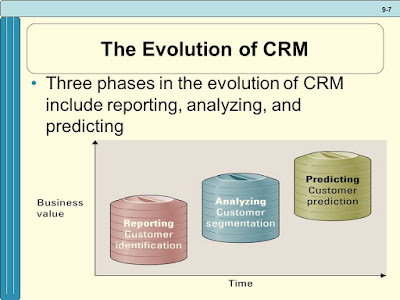CHAPTER 11 (MGT300)
Building a Customer-Centric
Organization- Customer Relationship Management
Customer Relationship Management
(CRM)
- · CRM enables an organization to:
-
Provide
better customer service
-
Make call
centers more efficient
-
Cross
sell products effectively
-
Help
sales staff close deals faster
-
Simplify
marketing and sales processes
-
Discover
new customers
-
Increase
customer revenues
Recency, Frequency and Monetary
value
- · Organizations can find their most valuable customers through “RFM” – Recency, Frequency and Monetary value
The Evolution of CRM
- · CRM reporting technology- help organizations identity their customers across other applications
- · CRM analysis technologies- help organizations segment their customers into categories such as best and worst customers
- · CRM predicting technologies- help organizations make predictions regarding customer behaviour such as which customers are at risk of leaving
- · Three phases in the evolution of CRM include reporting, analyzing and predicting
Using Analytical CRM to Enhance
Decisions
- · Operational CRM- supports traditional transactional processing for day-to-day front-office operations or systems that deal directly with the customers
- · Analytical CRM- supports back-office operations and strategic analysis and includes all systems that do not deal directly with the customers
- · Operational CRM and analysis CRM
Customer Relationship Management
Success Factors
- · CRM success factor include:
-
Clearly
communicate the CRM strategy
-
Define
information needs and flows
-
Build an
integrated view of the customer
-
Implement
in iterations- avoid big-bang approach (instant changeover)
-
Scalability
for organizational growth



Comments
Post a Comment